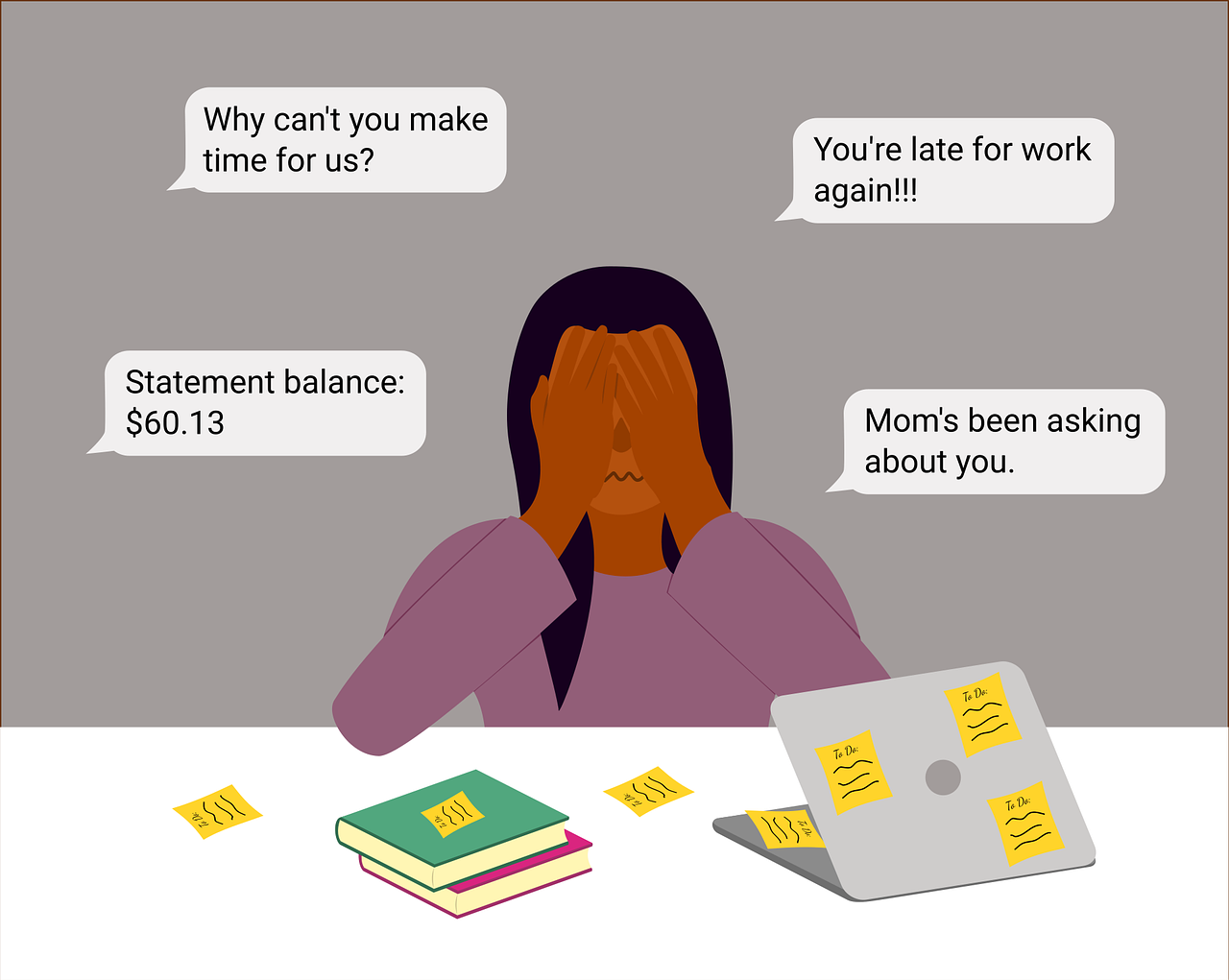Generalized anxiety disorder is a mental health condition that causes people to feel afraid, worried, and stressed all the time. It is marked by worrying too much, too often, and about things that do not matter. This worry could be about many things, such as money, family, health, or the future. Too much of it is hard to handle, and it is often followed by a lot of vague mental and physical symptoms. The main sign of generalized anxiety disorder is worrying too much.
A study shows that approximately 4.05% of the world’s population, or 301 million people, have an anxiety disorder. From 1990 to 2019, the number of people harmed has grown by more than 55%. Metrics for anxiety disorders show that the rates of frequency, incidence, and DALYs are all going up. The most common country is Portugal, with 8,671 cases per 100,000 people. Brazil, Iran, and New Zealand are next. The rate is higher in places with better incomes. Anxiety problems are 1.66 times more likely to happen to women than to men. Age-adjusted rates have stayed the same, which suggests that risk factors may also have stayed the same.
Empirical evidence also that the chances of getting GAD are much lower for men and people with better education. The chances of having present GAD are much higher for people who live in cities and are married. Depression (15.8%) and agoraphobia (9.4%), which are both mental illnesses, are the most common ones that happen together.
Moreover, according to genetic studies, many genes are probably involved in the development of GAD, but we still do not know much about this. Given this, if someone in the family has GAD, there is an increased probability that someone else will too, along with another anxiety disease. People with GAD often worry too much about everyday things like their health, finances, death, family, relationships, or work problems. Many times, worry gets in the way of daily life. Some of the signs that might be present are worry, nervousness, trouble sleeping, tiredness, irritability, trembling, and sweating a lot. Studies report that generalized anxiety disorder is linked to changes in the amygdala’s functional consistency and the way it handles fear and anxiety. Neurotransmitters, especially the GABA type, have been known for a long time to cause GAD by messing up the activity in the amygdala in the brain. For someone to be diagnosed with GAD, their anxiety, worry, or physical symptoms must make it very hard for them to function in social, academic, or professional settings.
The diagnostic criteria and diagnostic features of GAD in the light of DSM 5 TR are discussed next:
Diagnostic Criteria
A. lot of stress and worry (apprehensive hope), most days for at least six months, about a number of things or events, like how well one will do at work or school.
B. The person has a hard time controlling their worry.
C. The stress and worry are linked to three or more of the six signs below (any one required for diagnosing children), and at least some of them have been present more days than not over the last six months:
1. antsy or feeling tense or on edge
2. getting tired quickly
3. having trouble focusing or your mind getting blank
4. being irritable
5. tense muscles
6. sleep disturbances including; having trouble going or staying asleep or having restless, poor sleep.
D. The worry, anxiety, or physical symptoms make it hard to function in social, work, or other important areas of life because they are clinically significant.
E. The problem is not caused by the side effects of a drug (like an illegal drug or a prescription drug) or a medical condition (like hyperthyroidism).
F. The problem cannot be explained by another mental disorder, like anxiety or worrying about having panic attacks in panic disorder, negative self-evaluation in social anxiety disorder, contamination or other obsessions in obsessive-compulsive disorder, separation anxiety disorder, gaining weight in anorexia nervosa, bodily complaints in somatic symptom disorder, having a serious illness in illness anxiety disorder, or the content of delusional beliefs in schizophrenia or delusional disorder.
Diagnostic Features
- Too much fear and anxiety (apprehensive expectation) about many different events or tasks is what defines generalized anxiety disorder.
- The fear and anxiety are too strong, last too long, or happen too often compared to how likely or bad the expected event is.
- The person has a hard time managing their worry and keeping their troubling thoughts from getting in the way of their work.
- Generalized anxiety disorder makes adults think about things that happen in their daily lives, like possible job responsibilities, their health and finances, the health of family members, bad things happening to their children, or small things like doing chores or being late for meetings.
- Kids with generalized anxiety disorder often think too much about how well they are doing or how competent they are.
- As the disorder gets worse, the person may think about different things at different times.
- Generalized anxiety disorder is different from normal anxiety in a number of ways.
- First, the worries that come with generalized anxiety disorder are usually too much and get in the way of people’s ability to function in their social and psychological lives. On the other hand, daily worries are not too much and are seen as more doable, so they can be put off until more important things come up.
- Second, the fears that come with generalized anxiety disorder are more widespread, intense, and upsetting. They also last longer and often happen without any clear cause. People are more likely to have signs of generalized anxiety disorder if they worry about a lot of different things in their lives, like money, their children’s safety, and how well they do at work.
- Third, everyday worries are not as likely to be followed by physical signs like being antsy or feeling tense. Individuals with generalized anxiety disorder say they are in emotional pain because they are constantly worried and this makes it hard for them to function in social, professional, or other important areas of their lives.
- Along with the worry and anxiety, there are at least three of the following other symptoms: restlessness or feeling tense or on edge, getting tired quickly, having trouble focusing or your mind going blank, being irritable, having muscle tightness, and having trouble sleeping.
- For children, only one more sign is needed.
I am a passionate and knowledgeable psychologist, with a Master of Philosophy (MPhil) in Psychology specializing in Counseling Psychology. Through my writing, I share my insights and thoughts on various psychiatric disorders, conduct analysis on films that touch on psychological issues, and explore other topics related to psychology, while also providing valuable information to psychology enthusiasts, students as well the general community.





